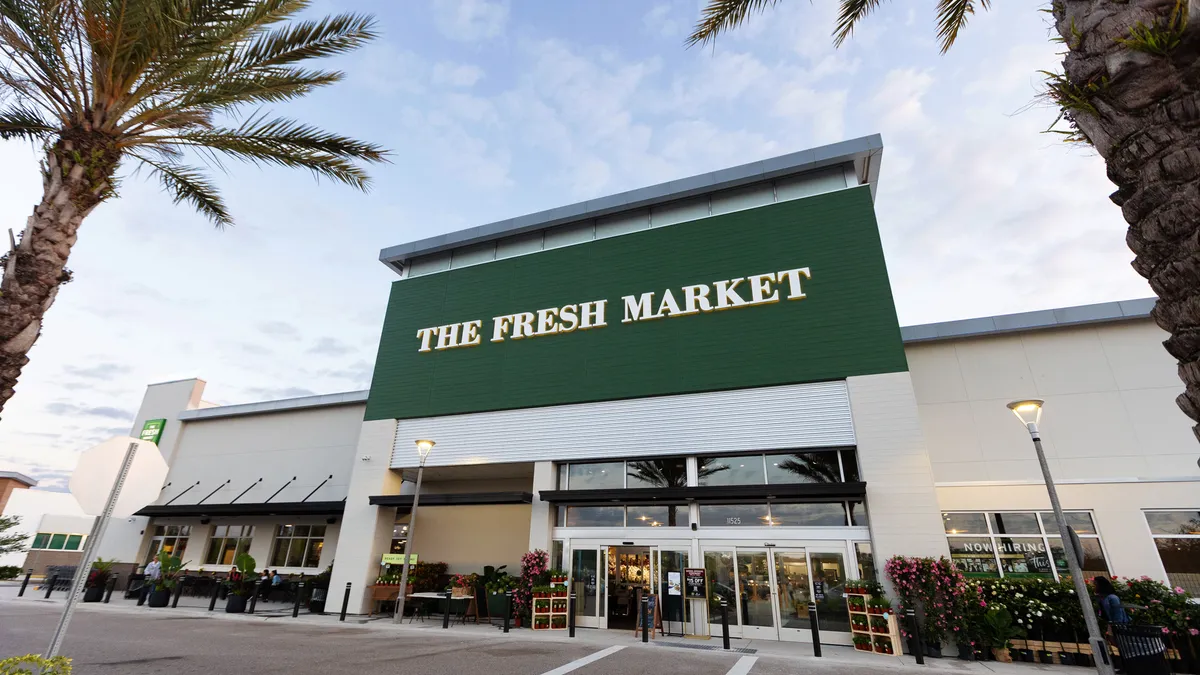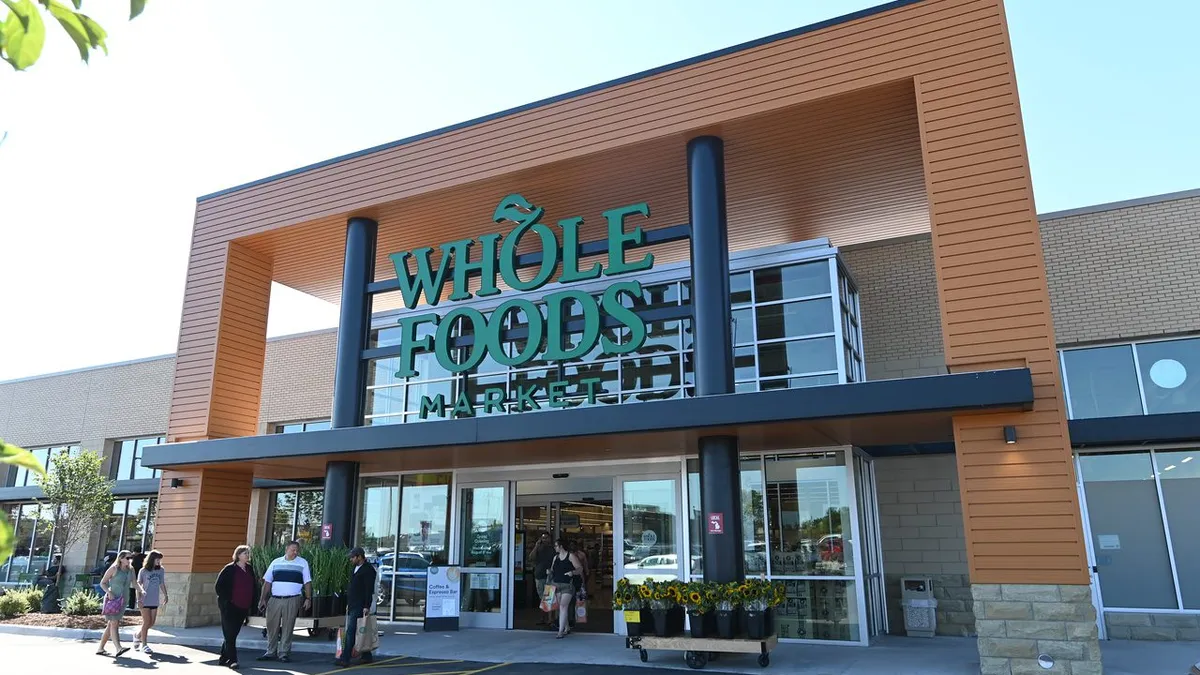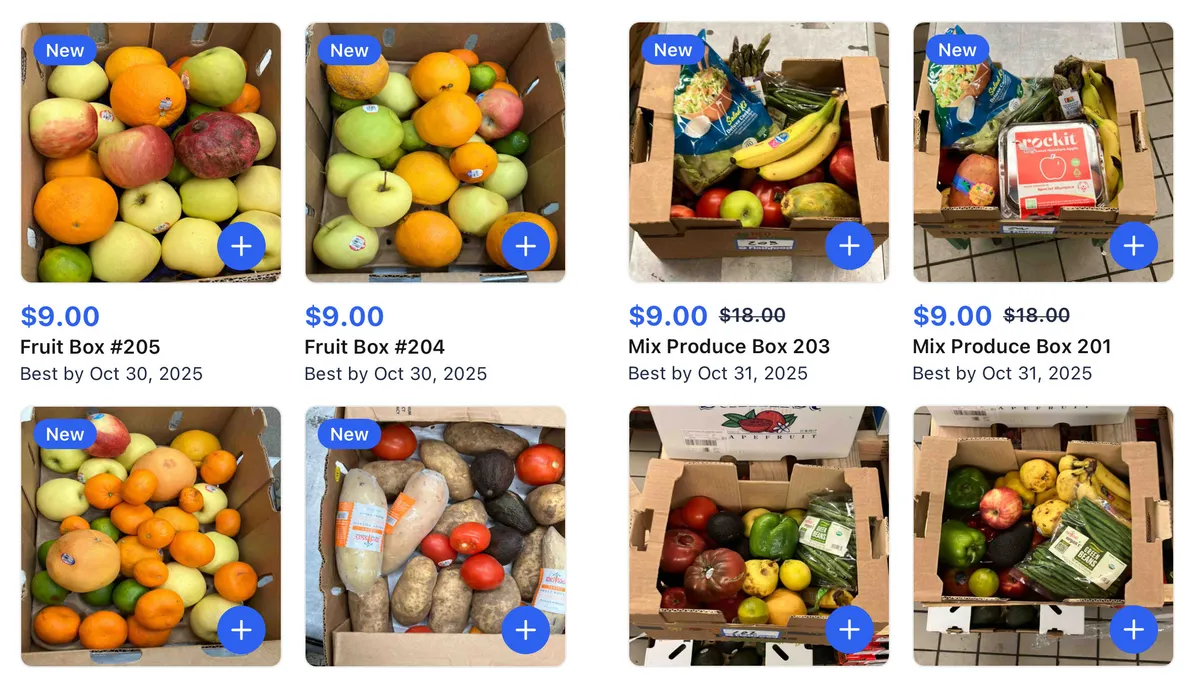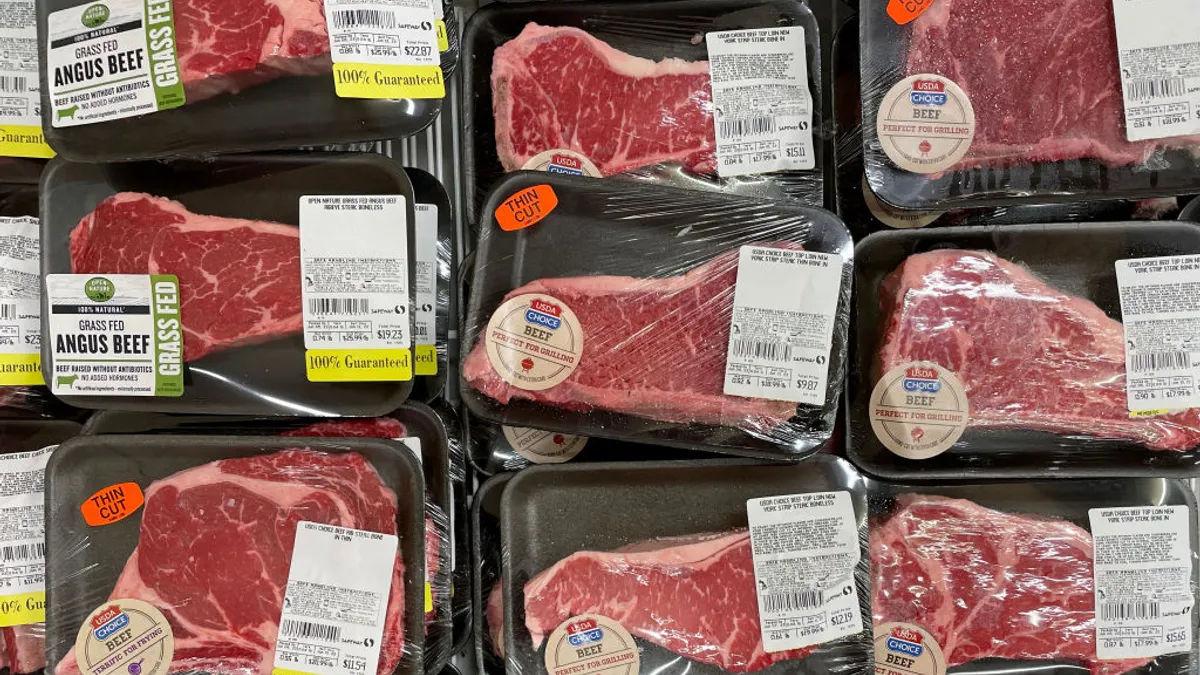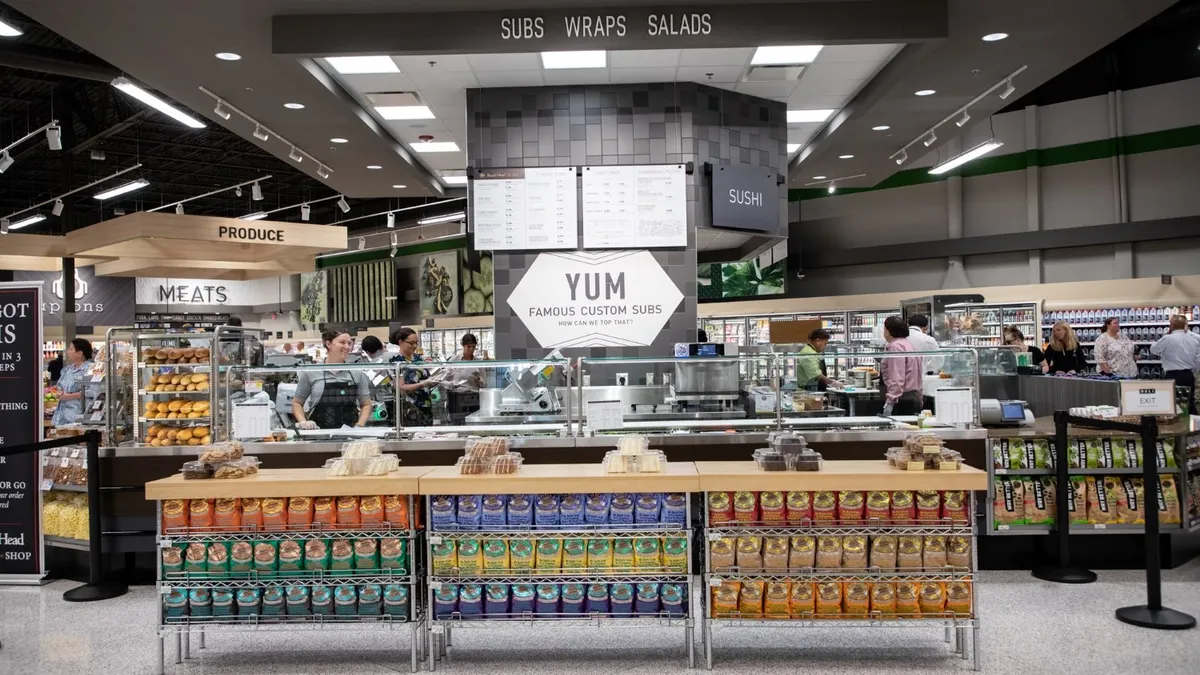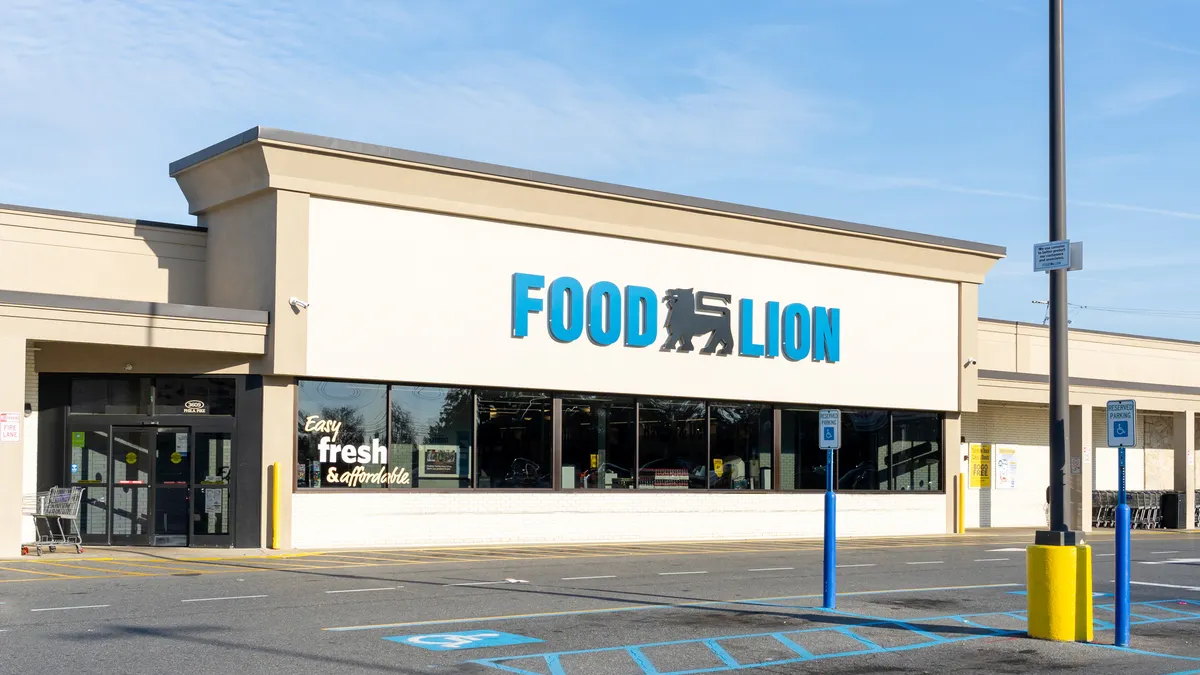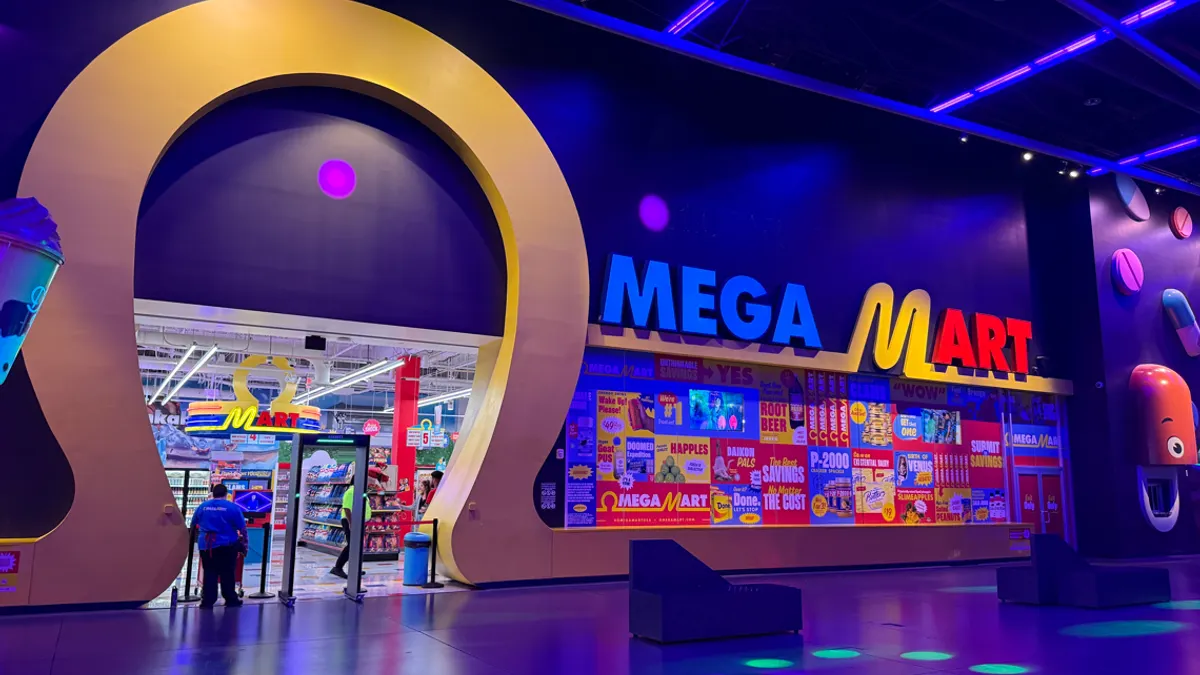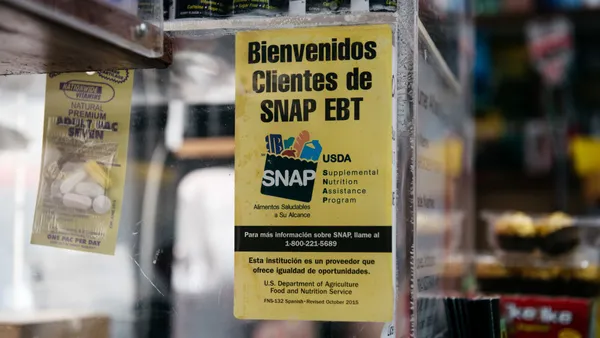Pardon the Disruption is a column that looks at the forces shaping food retail.
A decade ago, The Fresh Market was strategically adrift and losing market share.
Founded in 1982, the specialty grocer rose with the natural foods boom that also lifted Whole Foods Market, Sprouts Farmers Market and other similarly positioned retailers. But it grew too fast and tried to do too many things at once. At one point, it decided to add more than 1,000 “everyday” products to its shelves.
Needless to say, throwing a bunch of items like baby wipes and dog food at customers didn’t make The Fresh Market feel more special.
“The company tried to be everything to everyone, and so it lost its specialness and we kind of lost our way,” President and CEO Brian Johnson said in an interview with The Charlotte Business Journal earlier this year.
This problem could have sunk the company. And in fact, it did end up sinking retailers like Lucky’s Market and Earth Fare that struggled to stand out against traditional retailers that had quickly increased their natural and organic assortment.
But The Fresh Market managed to stay afloat — and eventually thrive — by doing what many grocers talk about, but that too few actually end up doing: figuring out how to differentiate from the competition.
It decided that the way forward was rooted in its past as a European-style gourmet grocer. This was the sort of shopping destination that its founders, Ray and Beverly Berry, had fallen in love with on their trips abroad and tried to emulate stateside with the focus on creating a premium experience. Rather than driving sales of everyday essentials and natural products, The Fresh Market zeroed in on ambiance and a distinct product set, including new gourmet meal options like a proprietary Neopolitan-style pizza.
We showcased a new Fresh Market location last year that features a cafe, store-made pizza and barbecue stations, custom salad and taco bars, and a large selection of private label meal kits.
The recommitment to specialty retailing appears to be succeeding. After a few years spent paring back its footprint as it repositioned its stores, The Fresh Market is now back in growth mode. Last year, the grocer opened eight stores, the Charlotte Business Journal reported. This year, it plans to open 12 stores, according to South American retailer Cencosud, which acquired a majority stake in The Fresh Market in 2022. Late last month, it opened two stores on the same day.

The existential threat facing conventional grocers
The Fresh Market isn’t the only retailer in its corner of the industry that’s successfully tweaked its approach. Natural and specialty grocers like Sprouts, Whole Foods and Natural Grocers have done a nice job refining their strategies around health and discovery so that they stand out from traditional grocers.
Over the past several years, an existential threat from conventional grocers forced specialty grocers to more clearly define their value to shoppers. Now, it’s conventional players that face a growing existential threat as inflation and tariffs continue to rattle consumers and as pressure from low-price competitors cuts into their business.
Grocers have known for decades that they need to sharpen their value propositions. But many have stubbornly refused to evolve as they continue to rely on their prime locations and an everything-under-one-roof identity to bring in shoppers.
That’s just not a compelling enough pitch right now.
“Having all the stuff people need and being located conveniently actually is not that big of a deal to customers now,” Erich Kahner, Dunnhumby’s director of strategy and insights for North America and Latin America, told me. “It’s more about what, specifically, do you offer as a retailer that’s clearly superior to other retailers?”
The pressure to take action is rising. Albertsons, as we learned from court hearings during its failed push to merge with Kroger, doesn’t believe it has the firepower to compete long term in this increasingly competitive landscape. This assessment relies on the brutal math of operating food outlets at scale, but it also says a lot about its weak positioning in the marketplace.
Other grocers face a similarly rocky future. In the Northeast, Stop & Shop has struggled to keep shoppers in its aisles as club, mass and discount stores have expanded. In the Midwest, Hy-Vee has worked to bring down its prices amid a sustained offensive from Walmart, Aldi and dollar stores. Walmart recently dethroned Giant Eagle as the grocery market share leader in the supermarket chain’s hometown of Pittsburgh.
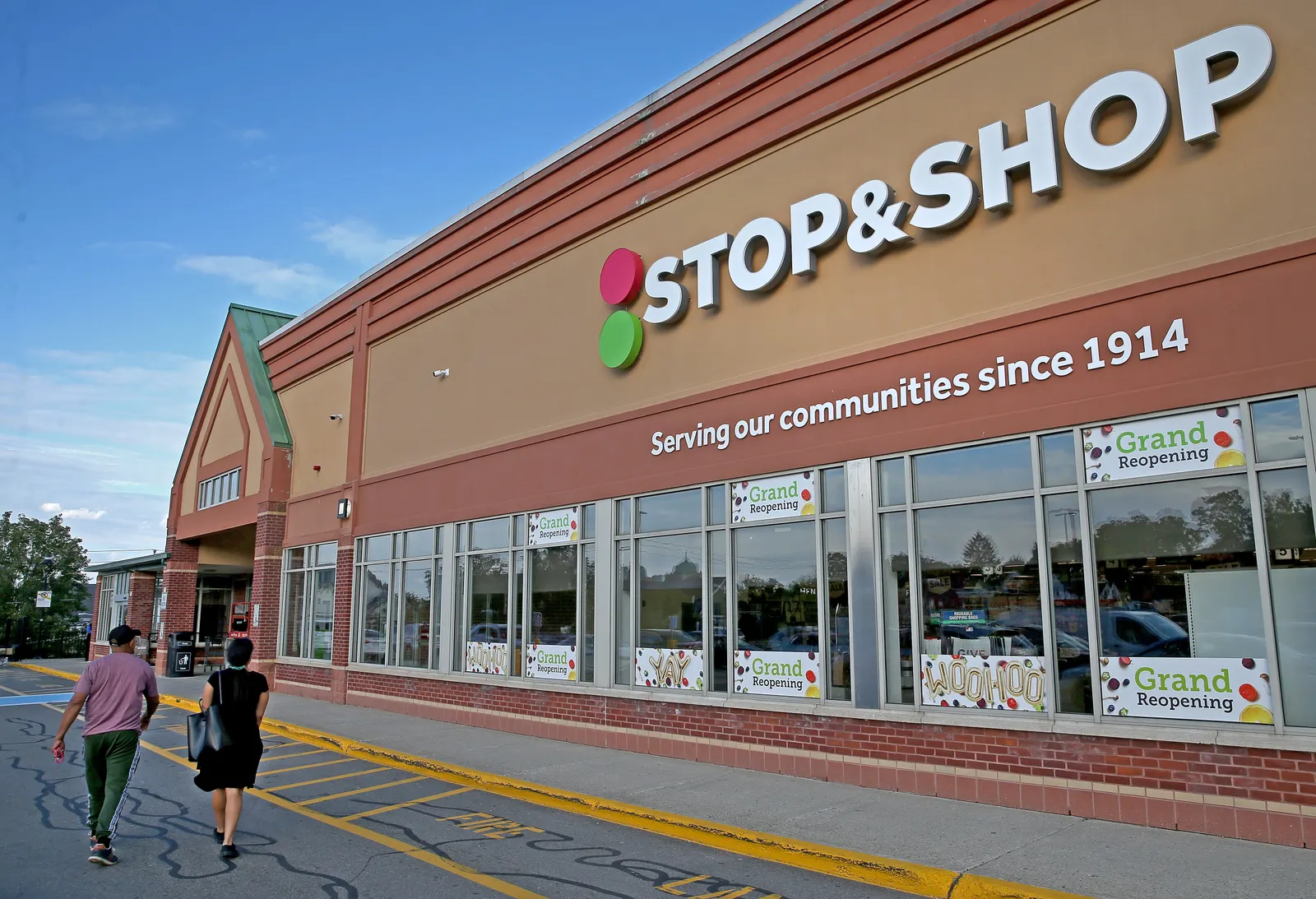
Which brings me back to The Fresh Market. Although it’s a specialty grocer, the company’s actions should serve as an example for traditional grocers. Instead of doubling down on its current approach, the company took a few steps back and studied the market, its shoppers and where the business was heading.
It thought carefully about what makes its stores special.
Should conventional grocers make a hard pivot like The Fresh Market did? It’s certainly possible. Years ago, Lowes Foods transitioned from being a traditional grocer to what its President Tim Lowe calls an “entertainment company,” complete with in-store restaurants and a renewed focus on customer service.
But it’s also possible for conventional grocers to succeed by refining their strategy and doing a better job at executing on their core promises. Kahner said traditional retailers all too often fail to use the vast amount of consumer data they collect to get an accurate look at what their brand stands for to shoppers.
“That might be something slightly different for each individual, but the sum of that means that it's a retailer who really gets me and helps me relevantly save money on the products that I care about,” he said.
I also think traditional grocers need to do a better job at solving the “What’s for dinner?” question. They have all the right ingredients to make meal inspiration happen, but they don’t always make it easy. Finding grab-and-go options too often requires a trek through the store. Prepared meals are usually unhealthy and uninspiring. Salad bars are oftentimes sad and empty.
For too long, grocers have focused on turning over products instead of creating compelling meal solutions across a variety of prep levels. As a recent Atlantic story points out, millions of people still struggle with planning and preparing dinner each night. “Figuring out what to eat is a pleasure until it becomes a constant low-grade grind,” writer Rachel Sugar points out. “It’s not just the cooking that wears me down, but the meal planning and the grocery shopping and the soon-to-be-rotting produce sitting in my fridge.”
This is a massive opportunity for conventional grocers, but they won’t grab hold of it by operating business as usual.
Ultimately, it’s difficult to get too prescriptive about the changes conventional grocers need to make because they will differ from one market to another.
Kahner pointed out that H-E-B, for instance, has worked hard to build its identity as not just a Texas grocer but as one that’s rooted in its local communities. Wegmans has fashioned itself as a foodservice destination while Publix has embraced Southern hospitality as a core differentiator.
Personalizing the shopping experience is something companies have talked about for a long time — just like they’ve for years acknowledged the need to differentiate. Now is the time to take action. If they don’t, they may soon hit their expiration date.



